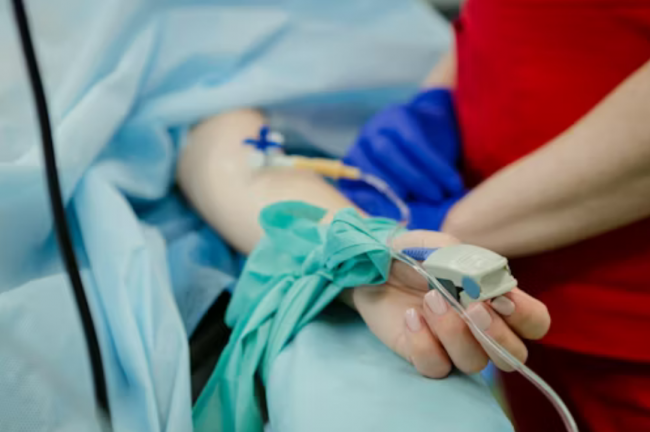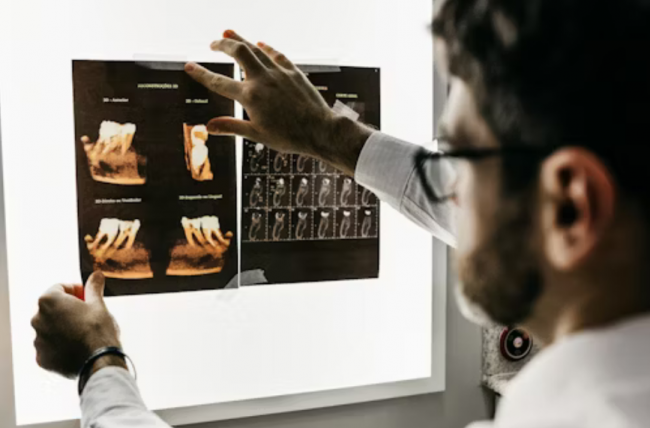Learn the difference between emergency and non-emergency care
All too frequently, sickness or injury strikes out of nowhere: you awaken in the middle of the night with severe stomach discomfort. You stumble while lugging groceries up a flight of stairs and are unable to bear weight on your sore ankle. Or your infant has a high fever during the weekend.
When these situations arise, we frequently find ourselves unsure where to seek medical attention, especially if the symptoms are serious and our normal doctor's office is closed.
While the answer is not always obvious, understanding the distinctions between a walk-in clinic, an urgent care center, and a hospital emergency room can make a significant difference, especially if you are in an emergency.
What’s the difference between ER, urgent care and walk-in clinic?
"Recognizing the differences between 'emergency' and 'urgent' care can be confusing, because both terms imply a medical need that must be addressed immediately," explains Shawn Evans, MD, an emergency medicine physician at Scripps Memorial Hospital La Jolla.
"However, there are distinct differences between hospital emergency rooms, traditional urgent care centers or walk-in clinics, including the level of care that can be provided at each."
Hospital emergency rooms provide medical services at any time of day or night. Unlike urgent care facilities or walk-in clinics, they are prepared and trained to address the most complicated or essential requirements, including life- and limb-threatening circumstances such as heart attacks and strokes, as well as catastrophic injuries from vehicle accidents.
Urgent care or walk-in clinics may cover a critical gap when you become ill or wounded but your usual doctor is unavailable and you cannot wait for an appointment.
"If your sudden illness or injury is something you would normally feel comfortable addressing with your primary care doctor, then an urgent care center or walk-in clinic setting is probably more appropriate than the emergency room," said Dr. Evans.
When to go to the ER
Certain medical conditions are considered emergencies because they can require rapid or advanced treatments, including surgery, that are only available in a hospital setting.
Symptoms that are best evaluated in an emergency room include:
- Chest pain or difficulty breathing
- Weakness/numbness on one side
- Slurred speech
- Fainting/change in mental state
- Serious burns
- Head or eye injury
- Concussion/confusion
- Broken bones and dislocated joints
- Fever with a rash
- Seizures
- Severe cuts that may require stitches
- Facial lacerations
- Severe cold or flu symptoms
- Vaginal bleeding with pregnancy
"Trust your gut," advises Dr. Evans. "If your personal instinct or your motherly intuition tells you it's serious, don't hesitate — go to the nearest emergency room."
All four emergency departments have received accreditation for geriatric treatment. Seniors are more likely than non-seniors to attend emergency departments for diseases or injuries requiring immediate or advanced care.
When to call 911
Even if it is obvious that you or a loved one requires emergency treatment, you may be unsure whether to drive yourself to the emergency hospital or dial 911.
"Many people are nervous about calling 911, but it's better to be safe than sorry," Dr. Evans said. "You should never drive if you are experiencing significant chest discomfort or bleeding, feel like you are about to faint, or have impaired vision. When in doubt, please contact 911; what matters most is that you arrive to the emergency hospital swiftly and securely."
In the event of a heart attack or stroke, contacting or having someone call 911 for an ambulance is always the best option. Paramedics can frequently begin providing life-saving care on the route to the hospital.
Drug overdose is also a developing issue. Recognizing the signals and calling 911 right away can save a life. Every day, many individuals die from overdoses caused by synthetic opioids such as fentanyl.
When to go to urgent care
Urgent care is not the same as emergency care. Urgent care facilities are same-day clinics that may treat a wide range of medical issues that require immediate attention but are not classified as emergencies.
"Many people use the emergency room as a place to receive after-hours care for minor illnesses or injuries without realizing they have another option," Dr. Evans said.
Urgent care facilities are generally equipped with X-ray, lab, and other diagnostic capabilities, allowing them to manage more severe non-emergencies than walk-in clinics. They also assist to free up emergency departments for the most critical medical situations.
Symptoms that can be evaluated and treated at an urgent care clinic include:
- Fever without a rash
- Vomiting or persistent diarrhea
- Abdominal pain
- Wheezing or shortness of breath
- Dehydration
- Moderate flu-like symptoms
- Sprains and strains
- Small cuts that may require stitches
Before heading to urgent care, you should contact your primary care doctor's office to see if you can arrange a same-day appointment. It's important contacting your primary care doctor since they may be aware with your health history, including which therapies have worked best in the past and whether you have any other medical concerns that need to be addressed.
"An urgent care clinic is not a substitute for your primary care physician, but it is a great resource when you need care but can't get in with your doctor," Dr. Evans said.
Urgent Care Mesquite is a fully equipped and certified emergency care facility. Urgent Care Mesquites empowers personnel and care for patients as if they were family.
When to go to a walk-in clinic
Walk-in clinics are an excellent alternative if you're not feeling well but don't need to go to the emergency room or get urgent treatment.
Walk-in clinics provide rapid and easy access to medical treatment. No appointment is required. They are often staffed by nurse practitioners and physician assistants.
Walk-in clinics treat minor illnesses, such as:
- Painful urination
- Rashes without fever
- Mild flu-like symptoms
- Cough and congestion symptoms
- Sore throat
- Ear pain
- Eye redness, discharge or itchiness
Many walk-in clinics also provide sports physicals and vaccines.
How to prepare for a medical visit
It's a good idea to include a list of your prescriptions, including over-the-counter meds, vitamins, and supplements, as well as how much and how often you take them.
Keep a note of any allergies (including pharmaceutical allergies) and past medical procedures or operations you've had, including the dates and names of the doctors or surgeons who treated you.
"Especially in an emergency setting, it can be very helpful for the physician treating you to know whether you've had operations in the past, or whether you're allergic to medications or anesthesia," Dr. Evans said.












